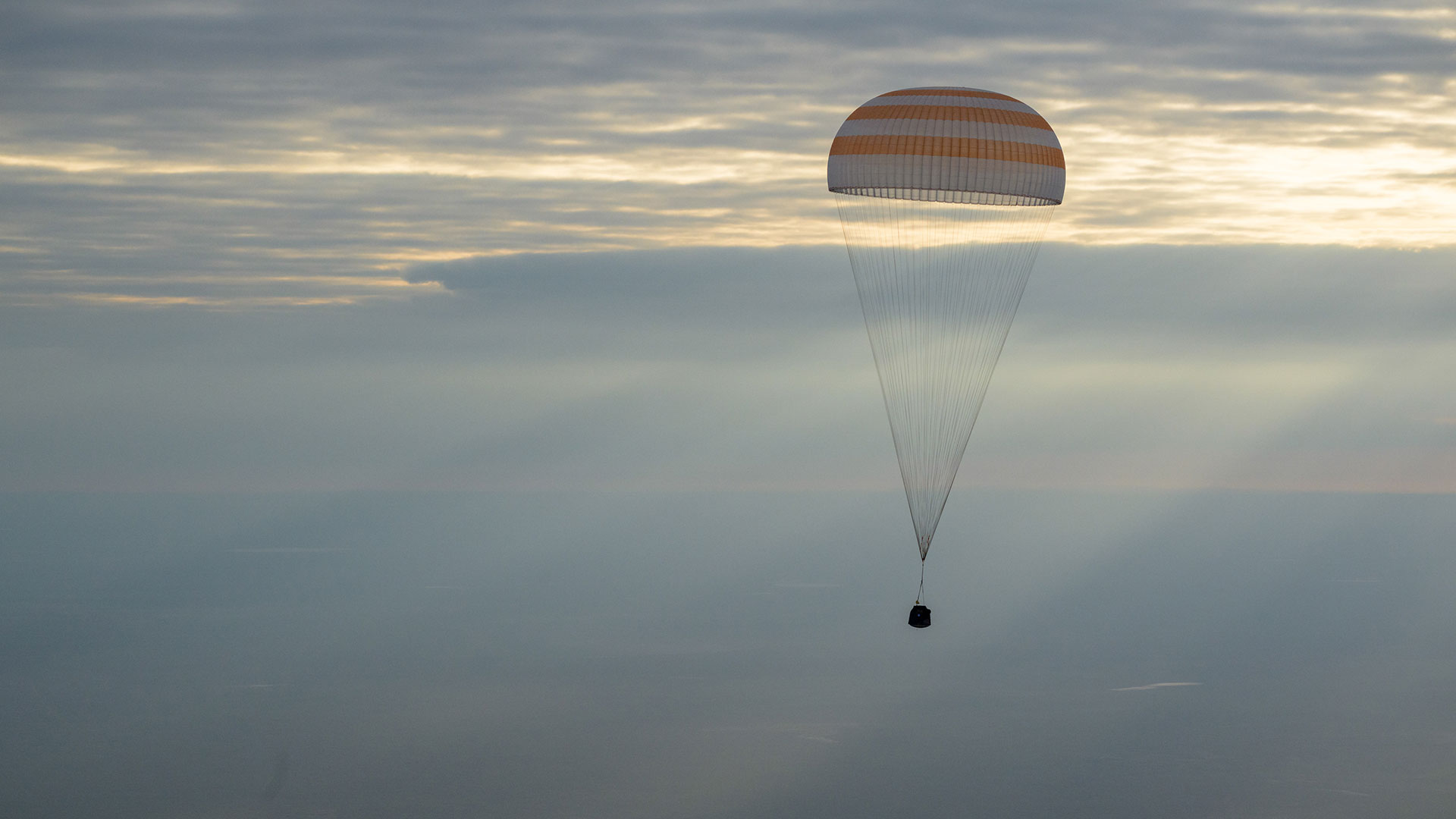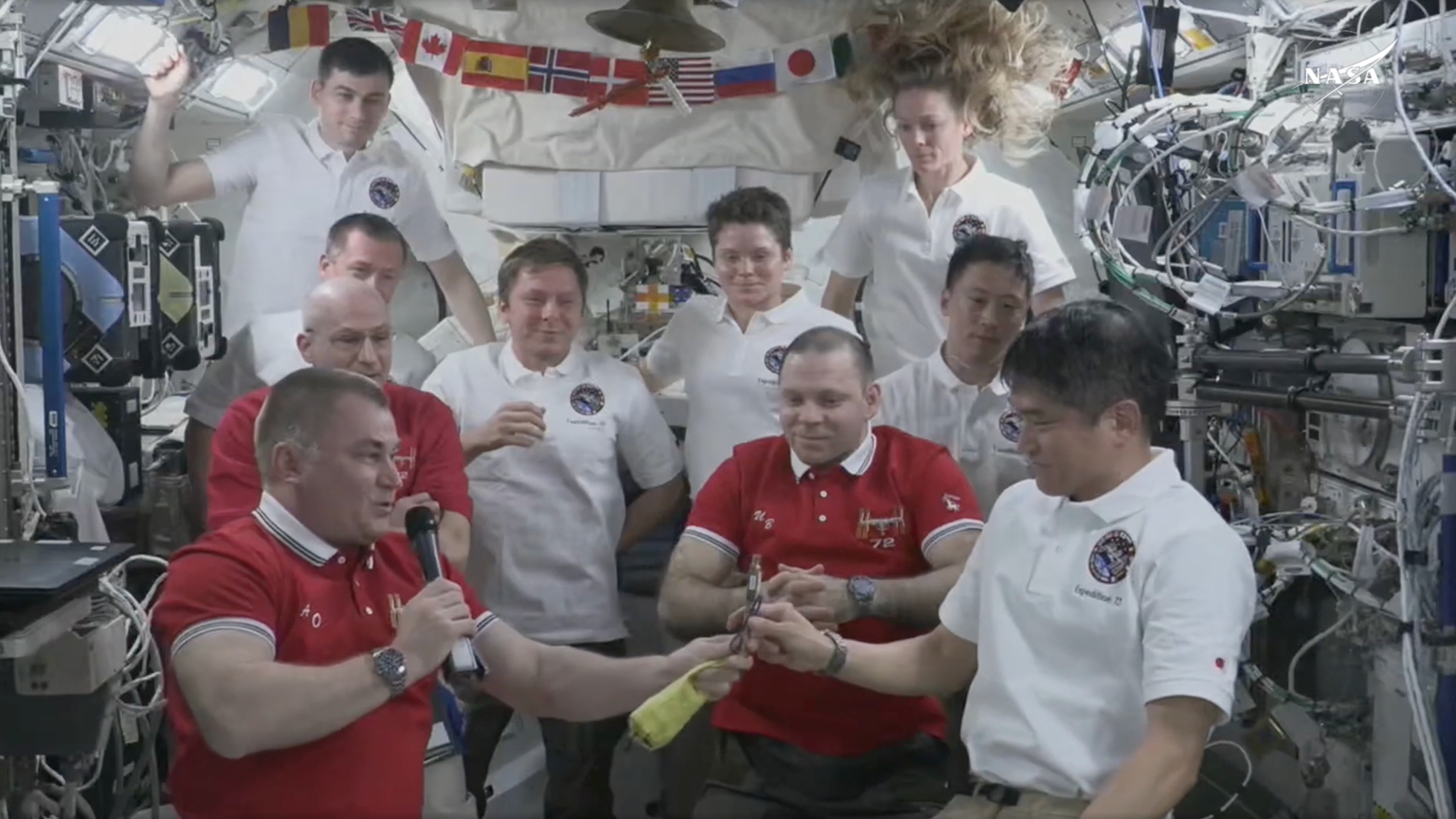Strangely tilted black hole challenges formation theories

A tilted black hole spinning around a misaligned axis has been discovered in our galaxy, challenging theories of black hole formation.
The black hole and its companion star form a system called MAXI J1820+070, which lies some 10,000 light-years away from Earth. The system was first spotted by NASA's Chandra X-ray Observatory in 2018. But recent optical observations by the Nordic Optical Telescope in the Canary Islands revealed that the black hole behaves in ways that defy astronomers' expectations.
By studying the orientation of the jets of ionized matter emitted from the black hole's poles, Juri Poutanen, an astronomer at the University of Turku in Finland, discovered that the black hole spins around an axis that is tilted by at least 40 degrees toward the plane in which the block hole orbits its companion star. That's the largest misalignment ever reported, Poutanen and his colleagues said in a statement.
Related: What happens at the center of a black hole?
"We observed black hole X-ray binary MAXI J1820+070 with a high-precision optical polarimeter," Poutanen told Space.com in an email. "Using these data, we determined the position angle of the binary orbit on the sky. The black hole spin orientation can be obtained from the radio and X-ray observations of the relativistic jets observed previously from the system."
By combining all of this information, the scientists were able to determine the angle between the axis of the binary orbit and the black hole spin, he added.
Theoretical models expect binary systems, such as black holes orbited by stars from which they suck material, to rotate around aligned axes that are perpendicular to their shared orbital plane.
Get the Space.com Newsletter
Breaking space news, the latest updates on rocket launches, skywatching events and more!
Previously, astrophysicists expected that these axes could be only "marginally" misaligned, the scientists said in the statement.
The question remains what caused the misalignment in MAXI J1820+070. The scientists believe that, contrary to current models of black hole formation following supernova explosions, the black hole in MAXI J1820+070 must have received a "kick" during the explosion that gave rise to it.
— Some black holes are anything but black – and we've found more than 75,000 of the brightest ones
— Scientists revisit the 1st black hole they ever discovered and realize it's bigger than they thought
— Black holes may have existed since the beginning of time (and could explain dark matter mystery)
The authors found it improbable for this misalignment to arise at a later stage, as accretion of material between two bodies of a binary system and the gravitational forces between them "always bring axes closer into alignment," the authors said.
The finding could have wider consequences for black hole science, the scientists said, as such misalignments could bias measurements of black hole masses and spins.
The paper was published in the journal Science on Thursday (Feb. 24).
Follow Tereza Pultarova on Twitter @TerezaPultarova. Follow us on Twitter @Spacedotcom and on Facebook.
Join our Space Forums to keep talking space on the latest missions, night sky and more! And if you have a news tip, correction or comment, let us know at: community@space.com.

Tereza is a London-based science and technology journalist, aspiring fiction writer and amateur gymnast. Originally from Prague, the Czech Republic, she spent the first seven years of her career working as a reporter, script-writer and presenter for various TV programmes of the Czech Public Service Television. She later took a career break to pursue further education and added a Master's in Science from the International Space University, France, to her Bachelor's in Journalism and Master's in Cultural Anthropology from Prague's Charles University. She worked as a reporter at the Engineering and Technology magazine, freelanced for a range of publications including Live Science, Space.com, Professional Engineering, Via Satellite and Space News and served as a maternity cover science editor at the European Space Agency.









